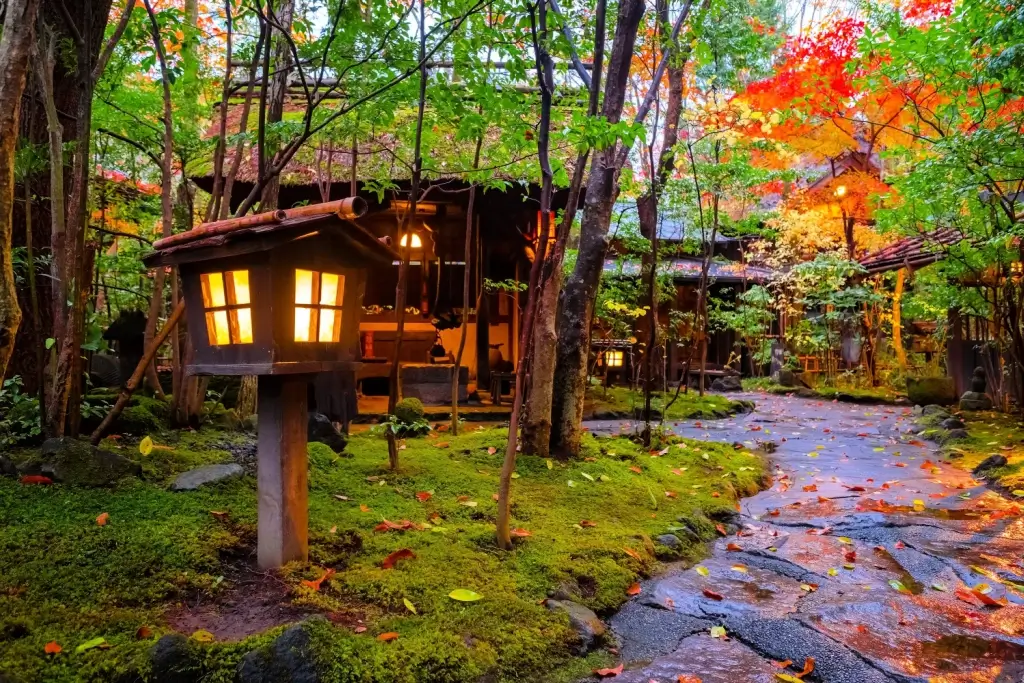Kumamoto Prefecture is located in Kyushu, a land of culinary and cultural treasures. This region is popular for its abundant fresh ingredients essential to its local delicacies. The quantity and variety of foods produced here directly result from its fertile land and coastal access. The heritage of this prefecture is a mix of traditional Japanese flavors, foreign recipes, and unique local innovations.
The result is food that stands out, even compared to other Japanese regional specialties. These dishes attract visitors from all over Japan and the world. Beyond its rich cuisine, this prefecture also boasts historical landmarks, natural attractions, and vibrant urban areas tied to its local foods. Whether exploring Kumamoto Castle or soaking in hot springs, sampling this prefecture’s signature dishes is essential to the experience!
Table of Contents
ToggleWhere is Kumamoto?
Kumamoto was the largest western island before the beginning of the Okinawa chain. To the west lies the protected bay known as the Ariake Sea. On all other sides, it is bordered by land—the Fukuoka, Oita, Miyazaki, and Kagoshima prefectures.

The prefecture also has a diverse geography. It contains the volcanic terrain of Mount Aso, lush green plains, and varied coastlines, which contribute to its agricultural richness and wide variety of foods. Its westernmost location in Japan also means a long history of mainland Asian influence. These two factors are the main reasons for its distinctive cuisine.
Taipien
Taipien originated in Kumamoto City. It is a noodle soup that blends both Chinese and Japanese culinary traditions. It is a light, flavorful chicken broth with thin glass noodles, vegetables, and seafood or pork. This unique combination reflects the city’s historical ties to Chinese immigrants. Beyond its rich flavors, taipien embodies this prefecture’s acceptance of diverse influences.

You can enjoy this soup in many places, but it is especially popular at eateries near landmarks with a high visitor volume. One such area is Suizenji Park. Its meticulously landscaped garden is only eight minutes by bus from JR Kumamoto Station. Local eateries around the historical fortress Kumamoto Castle also serve this dish.
This iconic landmark symbolizes resilience, as it has withstood numerous disasters and wars throughout the centuries. The Sakuranobaba Josaien tourist facility is the easiest place to find taipien in this area. The ease of finding this dish near cultural sites makes it a perfect local food for travelers exploring the region’s cuisine.
Ikinari Dango
Ikinari dango is a sweet, steamed treat made with sweet potato and red bean paste. The mixture is then wrapped in rice flour dough. The name of this snack means “quickly made”, reflecting its origin as a convenient treat for unexpected guests. It is a perfect example of Kumamoto’s knack for simple yet delightful flavors.

Beyond its culinary appeal, ikinari dango represents the region’s agricultural heritage, especially its sweet potato farming. Ikinari dango is also available in shops around JR Aso Station, so tourists visiting the nearby hot springs can easily create an authentic experience.
Are you looking for food from places as far as Kumamoto? Check out Sakuraco! Sakuraco delivers traditional Japanese snacks, teas, and sweets from local Japanese makers directly to your door so you can enjoy the latest treats directly from Japan!
Chosen Ame

Chosen Ame is a soft candy made from glutinous rice and malt syrup. This centuries-old confection is also unique to Kumamoto. Its subtle sweetness and chewy texture make it a nostalgic treat for locals. The candy’s name reflects the historical influence of Korea, adding another cultural layer to its appeal. These candies are popular souvenirs. Like taipien, visitors can easily find them in specialty shops near landmarks and other tourist areas. These candies are an accurate representation of this prefecture’s history.
Red Beef

Kumamoto is notable for its akaushi, or red beef. This meat is sourced from cattle raised in the volcanic pastures of Mount Aso. The volcanic soil in Aso provides ideal grazing conditions, which influence beef quality. Akaushi is famous for its lean yet flavorful meat and is often served as steak or yakiniku (grilled meat). Many restaurants in the prefecture feature this delicacy. It offers an authentic farm-to-table experience that embodies the region’s culinary and natural richness.
Dagojiru
Dagojiru is a hearty miso soup of dumplings, vegetables, and sometimes pork. The dumplings are handmade from wheat flour, giving the soup a unique texture. The dish deeply connects to the area’s agricultural roots and communal dining traditions. It was once a staple meal of farmers in the region. As a result, people enjoy dagojiru for its comforting flavor.

It’s available in family-owned eateries, especially near Mount Aso, where travelers can enjoy it after exploring the volcano. But if you’re exploring urban attractions, restaurants in central Kumamoto City also serve this nostalgic soup.
Why should I try these fantastic dishes from Kumamoto?
You should try these dishes from Kumamoto because they highlight the prefecture’s history of incorporating foreign culinary ideas. The blend of Japanese, Korean, and Chinese influences makes these dishes one-of-a-kind, even amongst Japanese delicacies. The region’s combination of volcanic soil and its coastal location produces meat and vegetables of the highest quality.

Kumamoto City also serves as a transportation center, so it is easy to include other attractions in an itinerary while enjoying food culture. You should visit this prefecture to appreciate the tradition of rustic farming, culinary diversity, and community dining that has become part of it. Have you tried any of these dishes, or do you have suggestions for other must-try foods in Kumamoto? Share your experiences or tips in the comments below!











